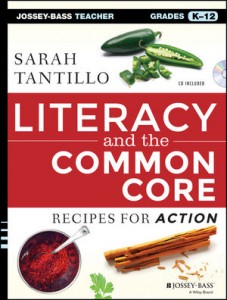What We Can Do When Kids Don’t Write Clearly

After reading yet another piece lamenting students’ inability to write clearly, I feel compelled to share what I’ve learned about this problem and offer some potential solutions.
As for causes of bad writing, we know that upbringing can be a factor. No one emerges from the womb knowing how to speak or write coherently. Depending on your home and school environment, you may or may not be surrounded by people who speak standard English.
We learn to speak by imitating what we hear, and we tend to write the way we speak. Students who have been immersed in nonstandard English will have to undo, to some degree, what they have learned. Teachers must find respectful ways to show students how to code switch.
It’s about more than grammar

In a study of 42 families from three different socioeconomic categories (professional, working class, and welfare), they observed and tape-recorded family interactions for an hour a month for thirty months. They found that children from the wealthiest families heard over 1,500 more words each hour, on average, than children from the poorest families (2,153 versus 616). Over a four-year period, this amounts to an estimated 32 million-word gap.
They also found that children mirrored their parents’ vocabulary resources, use of language, and interaction styles. In fact, about nine out of every ten words in each child’s vocabulary consisted of words also recorded in their parents’ vocabularies.
As I noted in The Literacy Cookbook (Jossey–Bass, 2012), the problem is not merely a word gap. It’s also an explanation gap. Exposure to fewer words means that one hears fewer examples of complex/logical thinking: fewer sentences, fewer questions, and fewer explanations of ideas or arguments.
But upbringing is not destiny
So how you’re raised may affect how well you write. But upbringing is not destiny: we can and should help students build a knowledge base that will strengthen their ability to comprehend and write.
And upbringing is not the only reason children fail to write well. The truth is, children from wealthy and well-educated families often struggle, too.

Case in point: for many years, in my home state of New Jersey and in others, the standards were framed as, “By the end of fourth grade,” or “By the end of eighth grade,” and so on. That sketchy framework put undue pressure on some teachers and left others to wonder what their responsibilities were.
To be perfectly blunt, our spotty national expectations have meant that some citizens – including some who are currently classroom teachers – never received proper grammar or writing instruction. And it is challenging to teach something you never learned.
Before & after the Common Core gained traction
One bit of good news is that the Common Core State Standards (CCSS) adopted or adapted by most states in 2010 address every grade from K-12, and grades 3-5 in particular address the most fundamental grammar points students need to know. The CCSS ELA standards also emphasize the importance of supporting arguments with relevant evidence and explanation, something good writers do all the time.

As dismal as this situation might seem, there is hope. There are things that teachers can do – no matter what grade or subject they teach – to help students become stronger writers.
What every teacher can do to strengthen writing
► Probably the most important thing we need to remember is this: Good writers write one good sentence after another. It sounds really obvious when you say it, but if you spend enough time in classrooms, you will realize that most people don’t frame writing instruction in this way. Teachers tend to assume students can write sentences, so they skip to things like paragraphs, “small moments,” and essays. There is nothing wrong with these assignments. It’s just that we need to build up to them.
Even if you start by showing students a model essay – planning with the end in mind, which is always helpful – it’s crucial to attend to the details.
The first time my elementary school gym teacher taught us how to shoot a layup, he didn’t simply shoot a layup and walk away, saying, “Save yourselves!” He showed us how to jump and lift the ball and drive our knee up and flick the ball so it would hit that box on the backboard. As we tried it, he gave us immediate, specific feedback. He wasn’t evaluating us. He was coaching us towards success.
What would it look like if writing teachers saw themselves more as writing coaches?
► Here’s a sentence that could be game-changing: “What do you like about that sentence?” Think about what this question implies:
1) Sentences have structures that writers create purposely, which we can analyze and admire;
2) Sentences can be written well or poorly;
3) If you figure out “what works” in that sentence, you could imitate it and write your own good sentences.

Captivating models can change how students feel about reading (eliciting, “Hey, this is funny!” or, “That’s so true!”) and in turn, how they feel about writing. If we want students to think of themselves as writers, the message must be inviting—as in, “Look: you could write like this!”
► We also need to teach students how to connect sentences and ideas so their sentences will flow logically and their explanations will make sense. As Peg Tyre noted in The Atlantic, teachers at New Dorp High School realized that not knowing how to use words such as “for, and, nor, but, or, yet,” limited their students’ ability to express clear thinking. They enlisted the help of Judith Hochman, who has developed a method that directly teaches such words and builds students’ knowledge of sentence structures and longer-writing structures so they can express more complex ideas.
► And we need to stop doing things that don’t work, like marking papers. Many English teachers spend hours and hours marking up students’ papers, and when they hand those papers back, the students merely glance at the grade and do nothing with the feedback. The result is that teachers become highly skilled at copy editing and students’ writing does not improve. So here’s some more good news: you don’t have to lose entire weekends to paper grading.

Priority #1: We need to fix how we teach grammar
Students often neglect to apply grammar rules in their own writing because grammar and writing are frequently taught as two discrete subjects, as in, “Today is Tuesday, so we’re doing prepositions. Turn to page 57 in your grammar book.”
This is not to say that you should not teach grammar content. But as the Hochman Method suggests, it must be done in a relevant, authentic context so that students can see how and why grammar rules are useful.
Unfortunately, many educators not only teach grammar and writing separately but also rely heavily on the “Daily Oral Language” (DOL) approach, in which they provide sentences riddled with random errors and students are supposed to correct them.
Reading specialist Mark Pennington enumerates 16 reasons why DOL doesn’t work, and I agree with each one. He points out that DOL is proofreading, not sentence construction; it tries to teach writing without actually having students write; it uses bad writing models to teach good writing; and it doesn’t teach the whys and hows of grammar and mechanics.

By contrast, in Mechanically Inclined, Jeff Anderson recommends a “mentor text” approach, which involves showing students models of sentence structures they can imitate. For example, you might begin with a two-word sentence – subject-verb, as in, “She laughed.” – and have students write their own.
Then you could build a longer sentence – say, a three-word sentence that includes a word that describes the verb, also known as an adverb. As in, “She laughed loudly.” In the process of comparing examples with classmates, students would derive the understanding that adverbs are commonly formed by adding “-ly” to an adjective.
In this way, we can teach parts of speech organically and authentically. It’s a win-win cycle: as students practice applying the rules in their own writing, they build their knowledge of grammar rules and strengthen their writing.
And once they’ve learned the rules, they can decide when to break them for creative purposes. When they need to. Not necessarily on a Tuesday.
____________________
Notes
1 Betty Hart and Todd R. Risley, Meaningful Differences in the Everyday Experiences of Young American Children (Baltimore, MD: Paul H. Brookes Publishing Co., 2002).
2 Hart and Risley, 197-8. NOTE: Children from professional families would hear 45 million words; from working-class families, 26 million; and from welfare families, 13 million.
3 Hart and Risley, 176. NOTE: Specific data: 86-98%.
4 Sarah Tantillo, The Literacy Cookbook: A Practical Guide to Effective Reading, Writing, Speaking, and Listening Instruction (San Francisco, CA: Jossey-Bass, 2012), 12.
5 Sarah Tantillo, Literacy and the Common Core: Recipes for Action. (San Francisco, CA: Jossey-Bass, 2014), xviii.
6 Peg Tyre, “The Writing Revolution,” The Atlantic, Oct. 2012, found at: http://www.theatlantic.com/magazine/archive/2012/10/the-writing-revolution/309090/
7 For more information on the Hochman Method, go to: http://www.thewritingrevolution.org
8 “Why Daily Oral Language (D.O.L.) Doesn’t Work,” Mark Pennington, Pennington Publishing Blog, Aug. 29, 2009, found at: http://penningtonpublishing.com/blog/grammar_mechanics/why-daily-oral-language-d-o-l-doesnt-work/
9 Jeff Anderson, Mechanically Inclined: Building Grammar, Usage, and Style into Writer’s Workshop (Portland, ME: Stenhouse Publishers, 2005).
Cover image credit




































Well said. I think you might find our website useful. It is a teaching tool focused on photography & writing. It is quite useful in working with students at all levels and assists the teacher in working on issues of grammar, vocabulary, punctuation, spelling etc. Cheers —
Terry Friedlander, founder
http://www.piclits.com
terry@piclits.com
I don’t see the Self-Improvement Section of the scoring guide – I only see Comments which sounds like it means teacher comments, not learner. Also, I was frustrated that the Hochman method is mentioned several times with no examples, and when I visited the website to find out more, the product is unavailable. By this I mean that A.) there is not one example of what the method might entail, for me to be able to judge for myself if it is worth looking at more closely, and B.) it is clearly an expensive program that my school will not be able to afford regardless of how strong it is. Making this program one of the “suggestions” in your blog post is false advertising in my book. Please in the future in your blog, only include ideas or programs that are available for all of us – teaching is already hard enough.
Julie, we’ll let Sarah explain her scoring guide here. We’re sorry you weren’t able to find all the information you wanted about the Hochman Method. We’ve revised some of the links so that they lead to more detailed background. “False advertising” would imply that MiddleWeb is trying to sell something here, and we aren’t. We try very hard to point readers to resources that are freely available, but there are many instances where what’s affordable for some may not be for all (book reviews come to mind). We’ve also asked Sarah Tantillo to reply to your concerns.
Thank you both for the prompt reply – I only meant false advertising in the figurative sense. I’ll look more carefully at the information.
Hi, Julie– Thanks for speaking up. Sorry the Self-Improvement section was not immediately visible to you; for some reason it carried onto the second page. As you will see, it’s an additional row where students add 1-3 goals for the next paper (based on previous feedback) and get a separate grade out of 20 points. About the Hochman Method, I am sorry that the initial links did not provide adequate information, but I think the updated links should be helpful, esp. this one, which is very specific and practical: http://teachlikeachampion.com/blog/hochmans-sentence-expansion-activity/
Please let us know if you have any additional questions/thoughts.
Thanks,
ST
Great article!